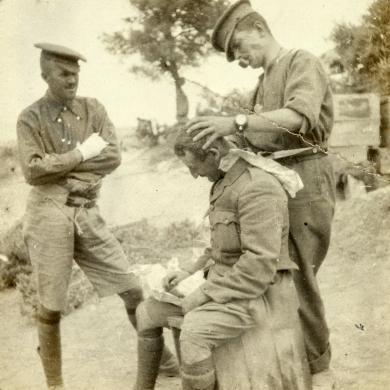Human History Educator Georgia Brockhurst shows how collection items from Auckland War Memorial Museum offer a unique insight into the everyday life of the soldier at Gallipoli.
This article comes courtesy of the Auckland War Memorial Museum. You can discover the stories behind four additional First World War objects on their website.
The daily life of the New Zealand soldier during the First World War is a story of hardship, danger and death fuelled by the path of duty and self-sacrifice. The soldier experience was typified by the hostile and appalling conditions that stemmed from trench warfare. To gain a deeper insight into the New Zealand soldier’s experience we must take a closer look at the items that characterised their daily life.
These objects serve as examples of items that New Zealand soldiers used to combat the harsh conditions in which they found themselves at Gallipoli. The dry and steep terrain greatly affected the New Zealanders and their Allies.
The area captured by the Allies during the Gallipoli landings on 25 April 1915 was tiny. A soldier’s entrenching tool helped him to carve trenches and living quarters into the hilly terrain. The lack of natural water sources within the Anzac sector on the peninsula meant that water was a scare commodity. Drinking water was brought in by barge and rationed carefully. Without adequate washing facilities, diseases ran rampant. One of the most effective ways troops combated lice was to shave, using the army-issued razor blades.
Water canteen
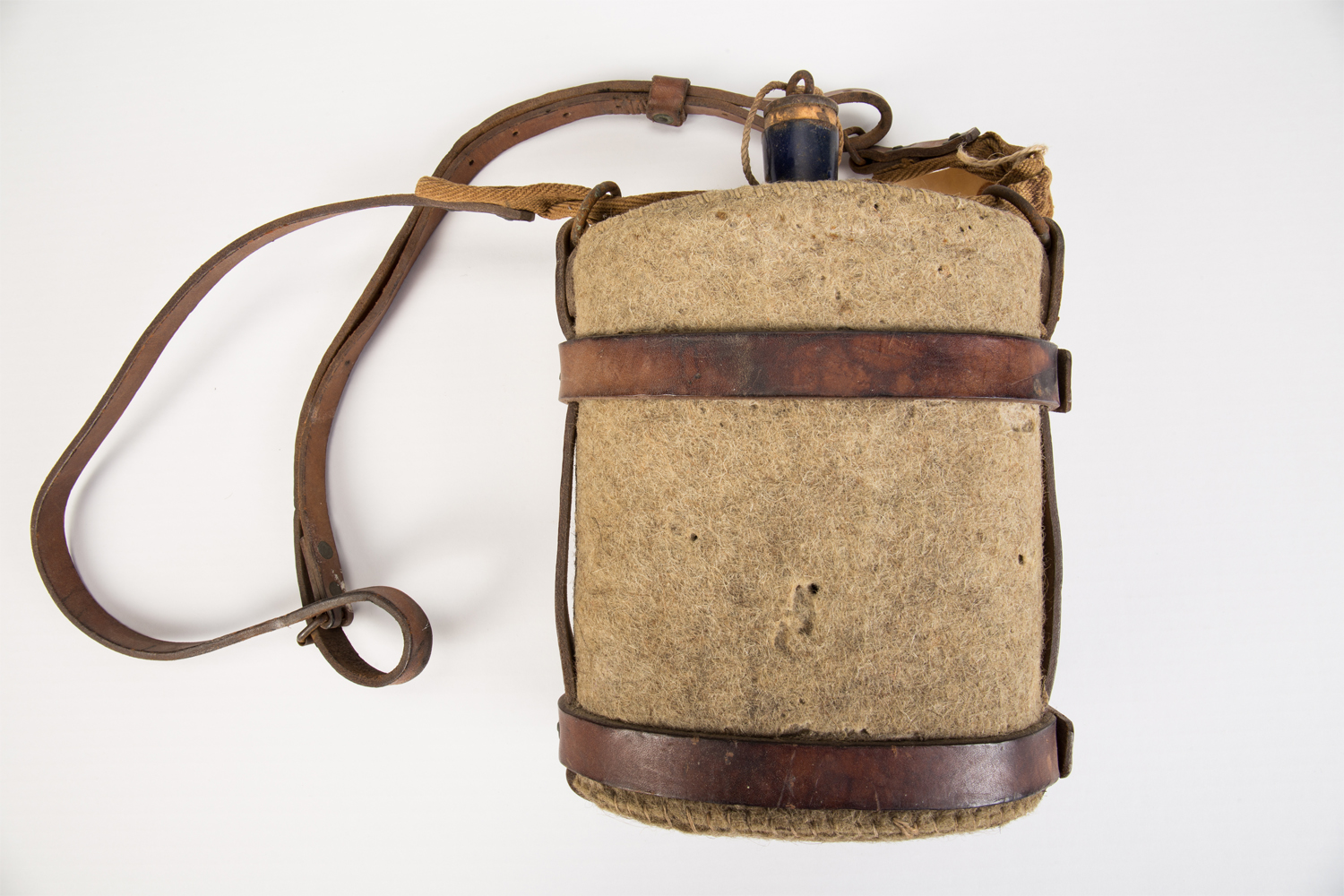
British Mk VII water bottle, issued to one of the men guarding German raider, Felix von Luckner who was imprisoned on Motuihe Island, 1917. Image courtesy of Auckland War Memorial Museum - Tamaki Paenga Hira, W2306.
Getting clean water for soldiers during the First World War was often challenging. The Anzac sector at Gallipoli had no natural water source and therefore all water had to be shipped in on barges before being transported to soldiers via water carriers. The water was gingerly rationed into the soldiers’ water canteens, the scarce supply resulted in widespread dehydration and dysentery from consuming contaminated water. British water bottles or canteens had blue enamel to indicate they were for water; the khaki woollen felt cover was used to conceal the enamel and prevent reflection and noise. The canteens were either carried in the pockets of the webbing or over the shoulder with a leather strap.
Entrenching tool
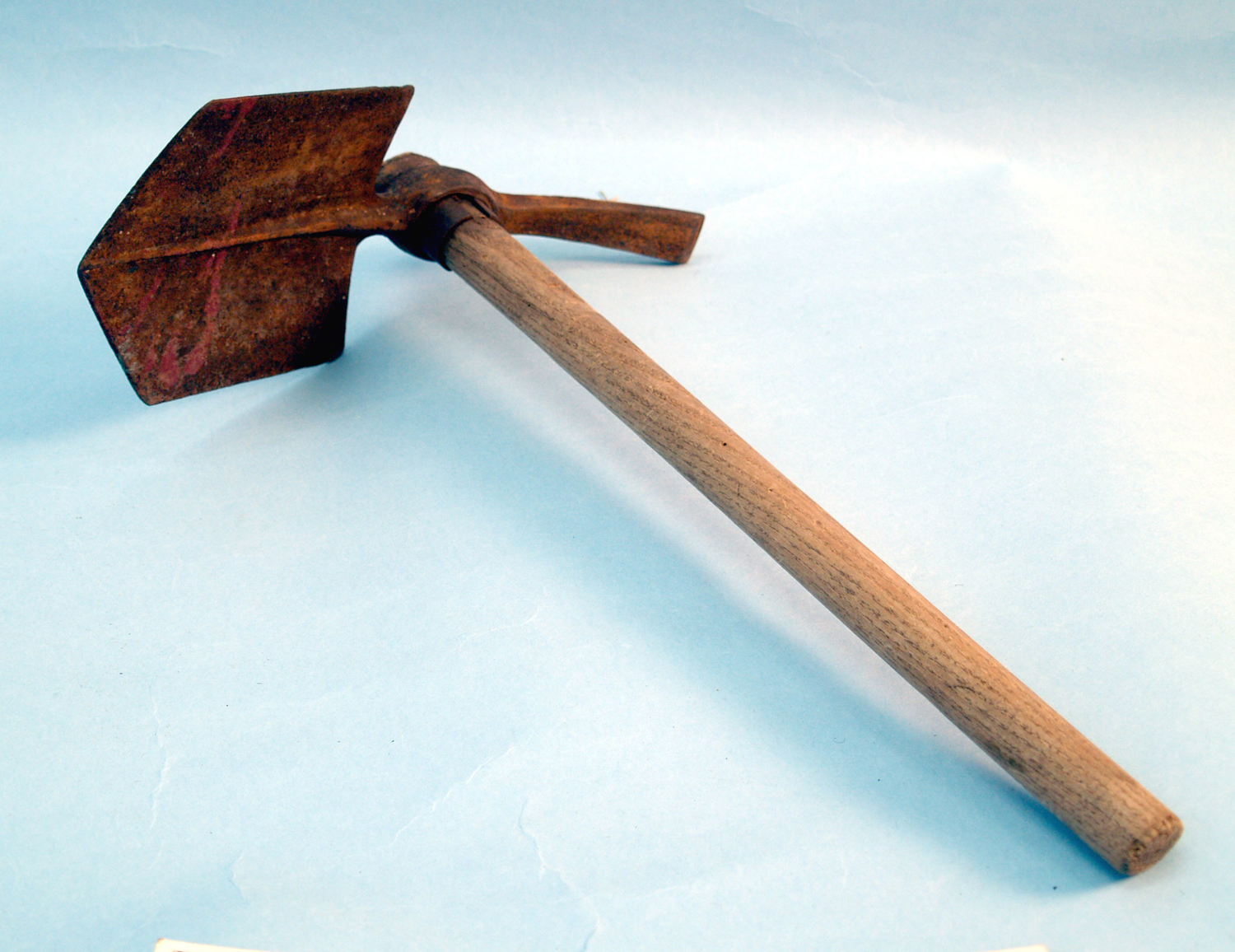
This entrenching tool was carried by Rifleman William Mandeno Smallfield, 3rd Battalion NZRB, on the Western Front. Image courtesy of Auckland War Memorial Museum - Tamaki Paenga Hira, 2007.55.1.
The two piece unit known as the entrenching tool became a vital and indispensable device for trench warfare. Through bitter experience, the Anzacs soon became aware that the entrenching tool was of equal importance to the rifle and the bayonet. Following General Sir Ian Hamilton’s orders at Gallipoli, the Anzacs had no choice but to “dig, dig, dig until you are safe”, working frantically to secure a foothold on the rugged landscape. The digging capabilities of the New Zealand Pioneer Battalion and the New Zealand Tunnelling Company was also essential in the establishment of vast underground military systems on the Western Front, in particular the Arras Tunnels. The defensive dugout yielded by the entrenching tool was a fundamental refuge for soldiers and was often their only form of shelter and protection.
Razor blades
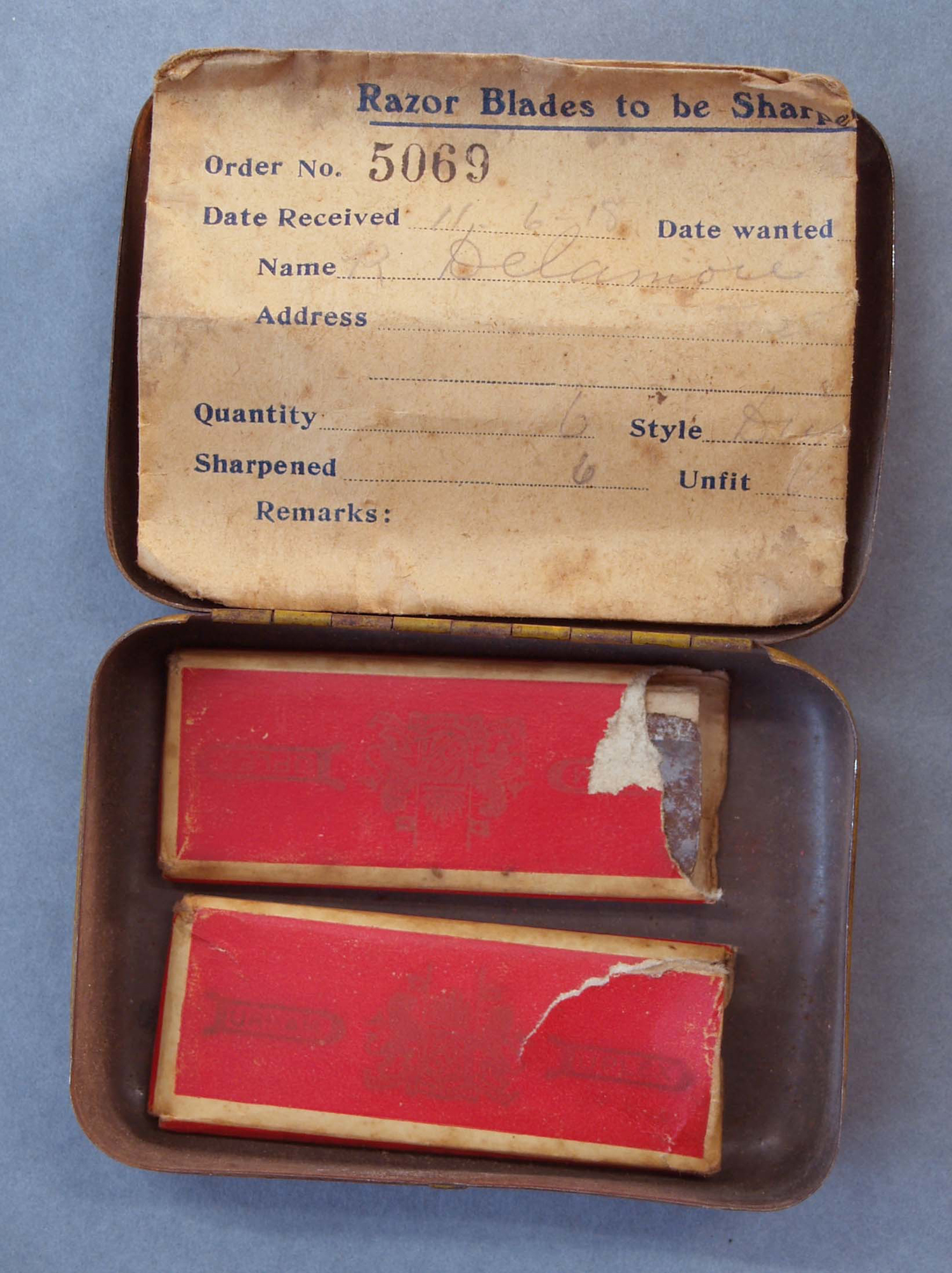
Two packets of Duplex Safety Razor blades in original packaging. Image courtesy of Auckland War Memorial Museum - Tamaki Paenga Hira, 2007.77.1.
For many soldiers who battled in the front line trenches, the opportunity to attend to matters of personal hygiene was rare. Soldiers intended to use their razor blades to keep their heads clean-shaven and avoid the trench phenomenon of lice; lice were soldiers’ constant companions and the then unidentified causers of the common wartime ailment, trench fever. However the prospect of shaving was further hindered by the unremitting water shortages. Although the desire to be hygienic and sanitary was generally high, this was not often attainable. The value and luxury placed in the act of shaving demonstrates how the once mundane, daily ritual had become a distant and lavish amenity.
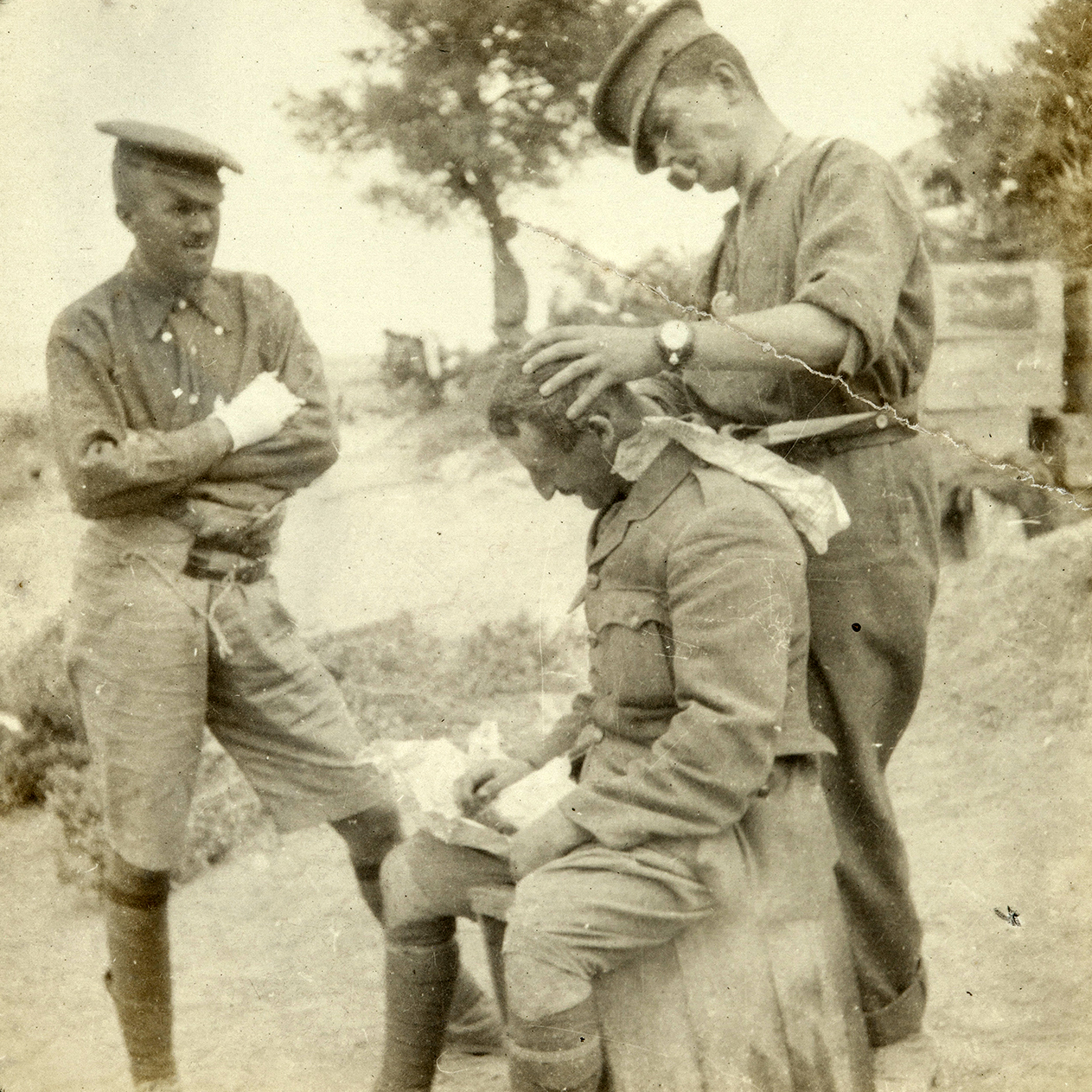
The commanding officer of the Otago Mounted Rifles sits for an 'infantry cut'. The photograph's original caption reads 'Haircut Sir!', and was taken by Sydney Webb at Gallipoli, 1915. Courtesy of Auckland War Memorial Museum - Tamaki Paenga Hira, PH-ALB-338p47.
At the call of King and Country the New Zealand servicemen left all that was dear to them to embark on a journey of duty and self-sacrifice. They endured hardness, faced danger and confronted death on a daily basis. Collection items such as these ones from Auckland War Memorial Museum offer a unique insight into the everyday life of the soldier at war. The items that characterised their existence bring First World War narratives to life and enable us to deeper comprehend the hardship and adversity they encountered.
Further reading
- 'Life in the trenches' – NZHistory
- Fenton, Damien. New Zealand and the First World War 1914-1919. Penguin, 2013
- O’Sullivan, Barry and Matthew. New Zealand Army – Uniforms and Clothing 1910-1945. Wilson Scott Publishing, 2009.
- Pugsley, Christopher. New Zealand and the Great War of 1914-1918. Bateman, 1996.
